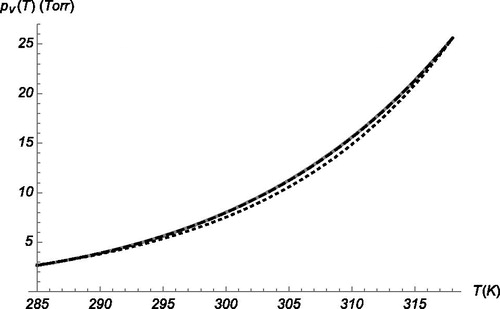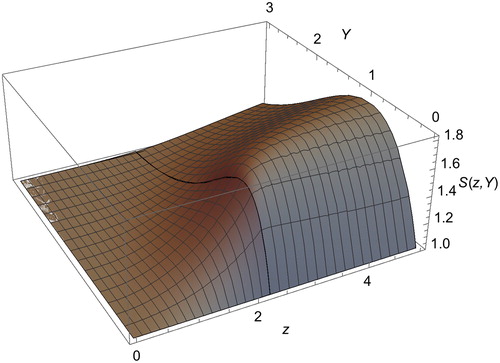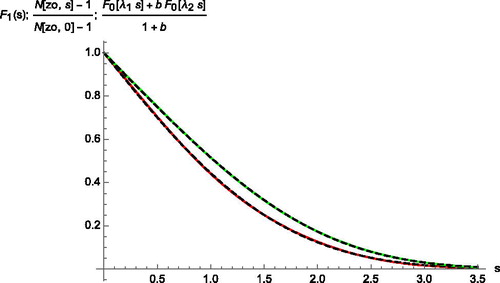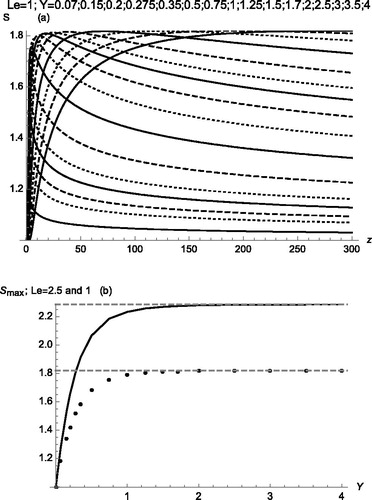Figures & data
Figure 1. Functions solving (21–24) for k from 0 (top) to 10 (bottom). The dotted curve immediately below the top line is F1(η) given in (Equation9(9)
(9) ), providing the solution (Equation5
(5)
(5) ) to the thermal problem in terms of the similarity variable (Equation6
(6)
(6) ).
![Figure 1. Functions solving (21–24) for k from 0 (top) to 10 (bottom). The dotted curve immediately below the top line is F1(η) given in (Equation9(9) F1(η)=(6+η3)Γ[1/3,η3/9]−34/3 ηe−η3/9 6Γ(1/3),(9) ), providing the solution (Equation5(5) T=Ts−xβF1(η) for 0<x<Δ(5) ) to the thermal problem in terms of the similarity variable (Equation6(6) η=ya1/3/(αx)1/3.(6) ).](/cms/asset/d03d6e86-77e7-4730-9926-7941619bf73b/uast_a_1795490_f0001_b.jpg)
Figure 2. Comparison between the experimental vapor pressure curve for butanol (continuous gray curve) and two exponential fits: one linear in T (lower dotted) another quadratic (upper dashed, indistinguishable from the pv(T) data).

Table A1.
Figure 3. Saturation ratio (26) versus dimensionless variables z, Y for an exponential vapor pressure and Le = 1. The insulator region corresponds to z < zo=2.264. The early part of the constant wall temperature region (zo < z < 5) is also included. As one moves along the ridge, at small Y (and z) Smax is close to unity. At larger Y (or z) the top of the ridge becomes flat, resulting in a constant asymptote for Smax(Y). Recall that z=zo(x/Δ).

Figure 4. Comparison of the calculated initial conditions at z=zo for the vapor concentration (top) and the temperature (bottom) with the linear combination (32) of two F0(λs) functions (dashed). s is a generic variable for either η or ηD.

Table 1. Optimal parameters to fit the initial value functions (first column) according to (32).
Figure 5. (a) Calculated axial variation of the saturation ratio S(z) for Le = 1 at various wall distances Y (indicated in the legend by its right asymptote, from bottom to top). (b) Smax versus Y for Le = 1 (bottom points, taken as the maxima for each Y value in (a)) and Le = 2.5 (top curve). Notice the minimal dependence of the boundary layer thickness on Le.

